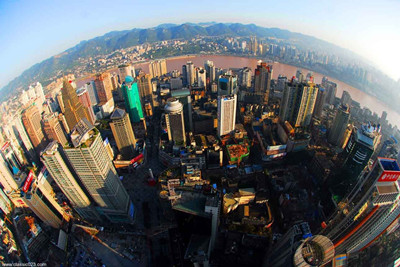It has become quite apparent that urbanization is now an unstoppable trend in China as the 1.3-billion-strong nation continues to seek to pluck more people out of poverty.
隨著擁有13億人的這個強國一直不間斷的尋找讓更多人脫貧的方法,中國的城市化現在已經明顯成為一種不可阻擋的趨勢。
China has a good track record in coping with urbanization.
而中國在應對城市化方面有著豐富的經驗。
Some of what was once backward rural land has been turned into bustling towns and cities.
曾經落后的農村地區(qū)已經變成繁華的城鎮(zhèn)和城市。

Many of the farmer-turned city dwellers have found themselves to be in an improved situation where they are entitled to better housing, healthcare and jobs.
許多以前耕種的城市居民發(fā)現自己有權享受更好的住房、醫(yī)療及就業(yè)機會。
The question now is how China can make its future cities more sustainable and suitable for living while at the same time generating enough jobs for the newcomers who have abandoned their livelihoods in their rural hometowns.
現在的問題是,中國如何能讓自己的未來的城市更持久,更適宜居住,同時為放棄了農村老家生計的新定居者們提供足夠的工作崗位。
So how can we make the building of future Chinese cities more sustainable?
那么,我們怎樣才能使未來的中國城市建筑更持續(xù)化?
How can we preserve our cultural urban legacies in the process?
在這一進程中我們怎樣保護我們的城市文化遺產?
譯文屬可可原創(chuàng),僅供學習交流使用,未經許可請勿轉載












